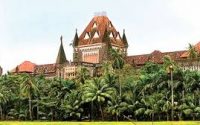$100 Website Offer
Get your personal website + domain for just $100.
Limited Time Offer!
Claim Your Website NowVasai-Dahanu area: A cradle for Mumbai’s environment movement
Source: hindustantimes.com
The Ministry of Environment Forests and Climate Change (MoEFCC) has filed an application in the Supreme Court (SC) to abolish the Dahanu Taluka Environment Protection Authority (DTEPA), a group created in 1996 to preserve the ecology of a stretch of coast between Mumbai’s northern suburbs and the industrial centres of south Gujarat.
The MoEFCC has said that over the last two decades new environment laws created by the Maharashtra and Union governments has made the body redundant, with special legislations to protect ecologically fragile areas and new forums like the National Green Tribunal, Coastal Regulation Zone, 2019, and Environment Protection Act, 1986, available to address environment concerns in the area.
Herein lies the significance of the DTEPA; it was born out of one of the first environment movements in the Mumbai region. Dahanu, with its beaches, backwaters and forested hills, was one of the last surviving green areas between the creeping suburbs of Mumbai and the industrial towns of Gujarat. Originally home to tribal groups like Warlis, it also has a small population of Zoroastrian Iranis, a community related to the Parsis. The Iranis invested profits from their cafes in horticulture, planting the degraded hills with chickoo, mango and other fruits. As industries and suburbs began to enter the area, this community was at the forefront of agitations to preserve the region’s ecology and economy.
Courts that heard petitions filed by the Dahanu Taluk Environment Protection Group and the Bombay Environment Action Group said that the state government had been issuing licences “indiscriminately” to industries and the predominantly agricultural area was being converted into an industrial zone. The government had failed to frame rules regarding safe disposal of hazardous industrial waste, the courts had said.
The campaign by the residents first led to the declaration of the area as “ecologically fragile areas” in 1991 under the Environment (Protection) Act.
What spurred the environment movement further was the plan for an 800-hectare coal-fired electricity plant meant to provide power for Mumbai. Worried that airborne ash and effluents from the plant will destroy the area’s fishing and horticulture industries, the residents went to the Supreme Court with a writ petition. The case resulted in a landmark order that created the quasi-judicial DTEPA headed by retired Bombay high court (HC) judge justice S Dharmadhikari and a team of experts.
The contribution of the DTEPA in Mumbai’s environment movement is significant. A paper by Geetanjoy Sahu and Armin Rosencranz titled ‘Court-Appointed Monitoring Committees: The Case of the Dahanu Taluka Environment Protection Authority, says that the agency played a role in protecting social justice and equitable rights of local communities. “With its landmark orders, the DTEPA has contributed to the environmental discourse in India,” the paper said.
Over the decades, a pest infestation of the chickoo plantation and a declining fish catch has been blamed on the growing industries. Residents of the area said that the area is changing rapidly, with more industrial and urban developments planned for the area.
They feel that plans to scrap the DTEPA are an attempt to remove the last hurdles to uncontrolled construction.
The campaign by Dahanu residents is one of the two significant environmental movements in the Vasai-Dahanu area.
In 1988, residents of the villages in the Vasai-Virar region, located between Mumbai and Dahanu, started a campaign to stop the state government from appointing The City and Industrial Development Corporation (Cidco) of Maharashtra, as the planning agency to convert the agricultural area into planned towns with a projected population of 25 lakh. Worried that the region’s horticulture and fishing industries will be destroyed by new construction, the Harit Vasai movement managed to halt the urbanisation.
“The government reduced the proposed Floor Space Index from 1 (that would have increased urbanization) to 0.33. The western part of the region is still green because of the movement,” says advocate Robert Dabre, one of the leaders of the agitation.
“We do not know what will happen when the current development plan ends in 2021, but we are happy that we could protect a part of Vasai.”



